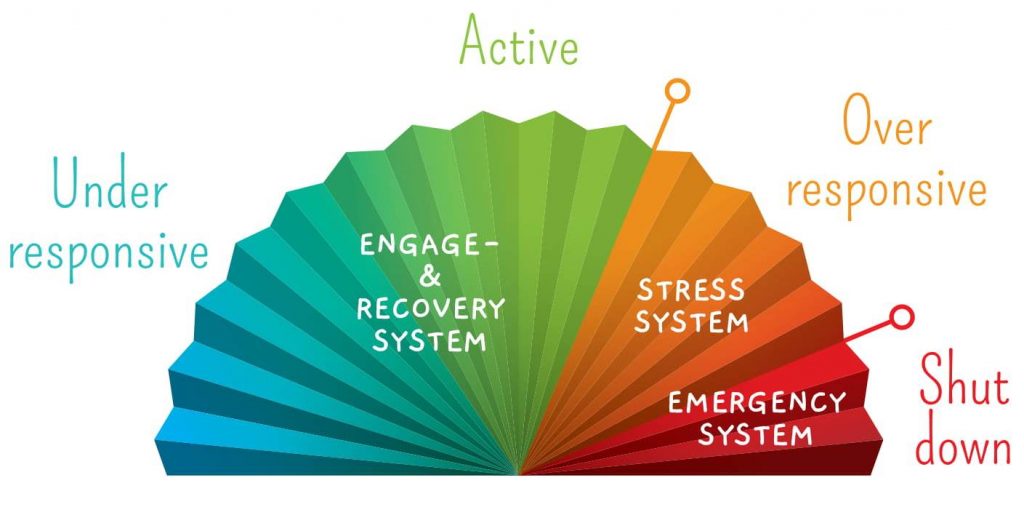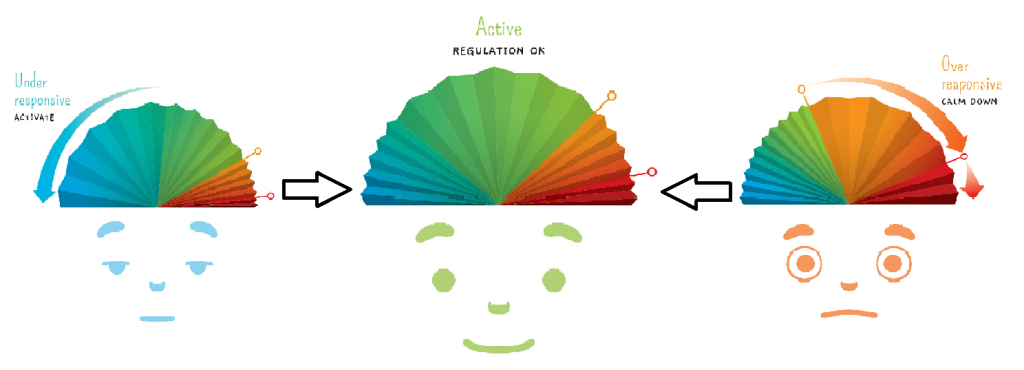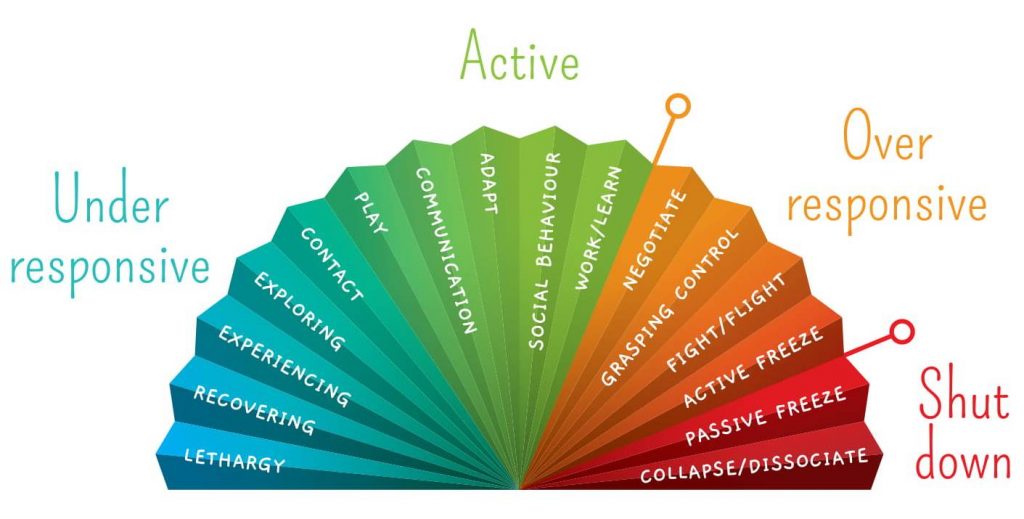The sensory Fan-model
The Sensory Fan-model is intended as a tool to explain to someone which systems are active in their body, and how they can influence the systems by using activating and calming strategies. Download the explanation of The Sensory Fan-model.

The Sensory Fan-model shows three systems. The engage- & recovery system is shown in the blue-green part of the fan. The stress system is shown in the orange part, the emergency system in the red part. Someone who does not respond sufficiently to sensory input, needs more activating input, so the blue part becomes smaller and the green part can unfold more. An overresponsive person needs calming input, causing the orange to fold and at the same time further unfold the green part. How fast this folding and unfolding happens, differs from person to person. The ‘expandability’ differs from person to person as well. There are people with many ‘folds’ and there are those with fewer.
In chapter 1 of Sensory Solutions in the classroom you will find more information about the three systems.

It feels good to function mainly in green. Which doesn’t mean you’ll never be in the blue or orange area. Rest and recovery take place in the blue area. And sometimes you experience stress, which puts you in the orange part of the fan. This does not have to be negative. Stress can be a useful part of life, as long as it is not chronic and limiting.
The people for whom you use this Fan-model can also learn how to use it to indicate how they are doing: which color they think is mainly unfolded, which system is active? They can indicate whether they experience too little or too much sensory input.
- Do they feel comfortable and can they do what they want to or need to do or not?
- Is the blue part unfolded mostly? Then they experience too little input and are underresponsive. You can then discuss the possibilities of activating strategies: to fold the blue, to unfold the green.
- Do you see quite a bit of green, but also too much orange unfolded? Then they are regularly overstimulated. You explain that with the help of calming strategies at certain moments, they can unfold the green part better and at the same time fold orange.
After practicing with The Sensory Fan-model, the person may be able to report how they are doing – perhaps after a while without even using the fan – and also learn to apply strategies independently.
Is it difficult to explain it only with words and a two-dimensional picture? Then fold a fan of colored paper and stick it on a surface. Now you can make the three-dimensional fan move. Look below for downloads on how to make your own fan.
Your fan (with your own content)
Download your own Sensory Fan-model here.
Everyone uses their own words, gestures or sounds to express how they feel. This is also the case when using the fan. To be able to connect well with someone else, it’s nice to use those terms that suit the person for their ‘type of sensory processing’: the under- or overresponsiveness, the ‘shutdown’ and certainly also the terms that indicate that they feel good. That is why you can make your own fan. We’ve made an example:

Within the care landscape for people with trauma, with ADHD or autism, with Brain Injury, with psychological problems or with giftedness, for example, different terms are used. Which terms suit you and/or your client? We invite you to write them in your own fan.
We are very curious about your fans! Would you send them to monique@dutchsensorysolutions.com? (Preferably without the client’s name, but with the disorder or personal characteristics in them).
Make your own Fan
- Paint an existing fan
- Make a fan with colored paper
- Make a fan with a color print

